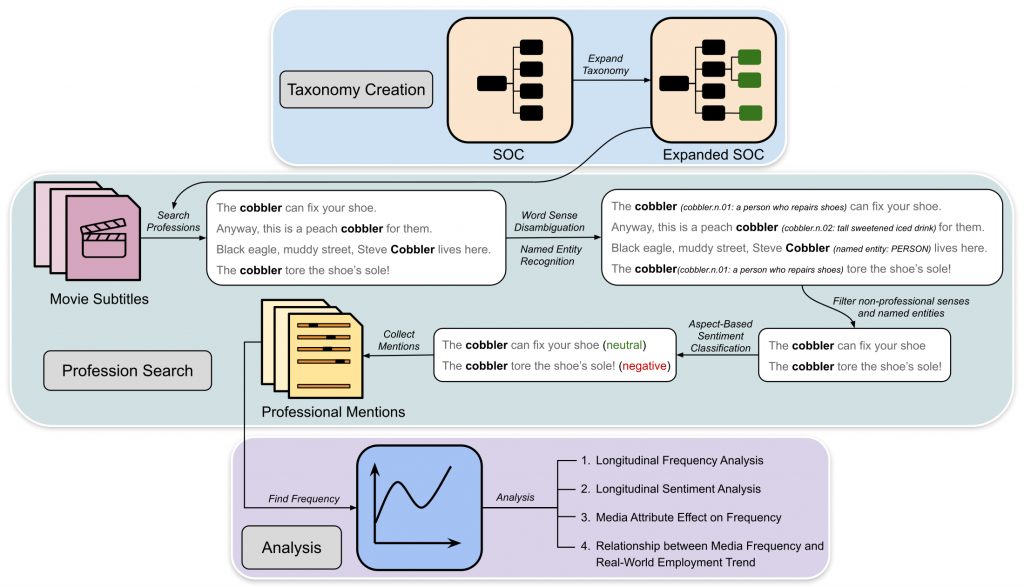Media acts as a mirror to society. Societal trends and culture dictate media narratives which informs and moulds our perception of the real world. We study media representation of professions and analyze its frequency and sentiment trends. We find that frequently mentioned professions employ more people.
The profession taxonomy contains 3 tiers: SOC Groups, WordNet synsets, and professions. The outermost circles are the SOC Groups. Click on a SOC circle to zoom in onto its synsets. Click on a synset circle to zoom in onto its professions. Click outside the circle to zoom out.
Professional Mentions
Movies and TV Shows
Time Range

For more information, find our PLOS ONE paper here